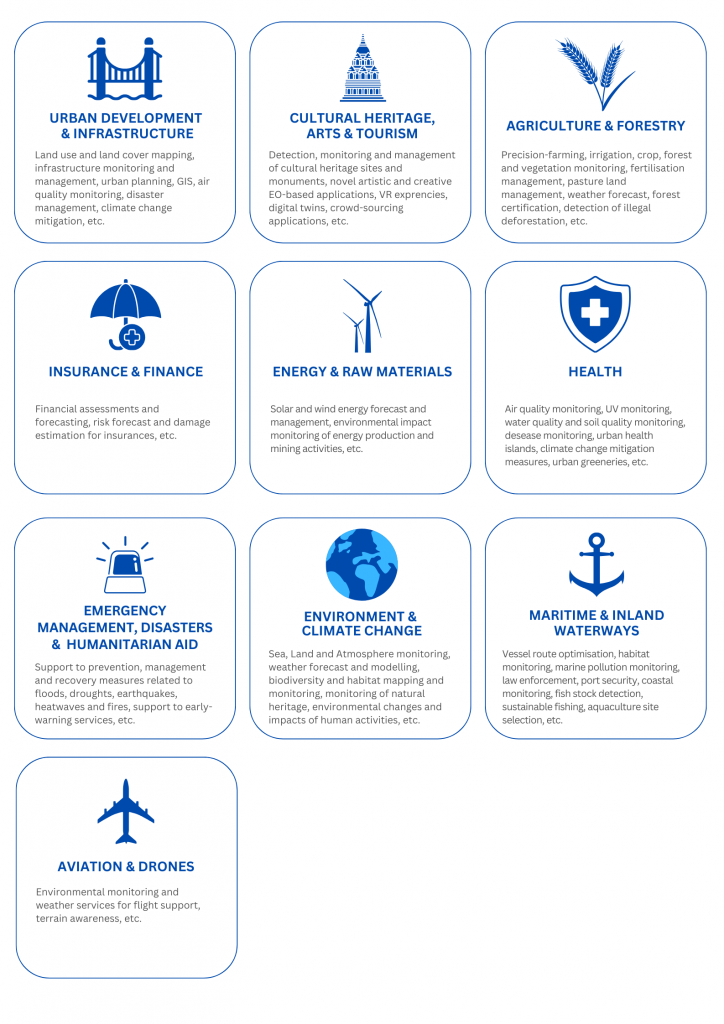EO Uses
EO Downstream Market
EO data serve diverse industries, foster the creation of new skilled jobs, and contribute to the growth of the European economy. Satellite remote sensing provides data and information that is useful to numerous national services and that can entail considerable savings for different users.
EO revenues for data and services is expected to grow from €3.4 billion in 2023 to almost €6 billion in 2033. EO services constitute the predominant market, with revenues estimated reaching €2.8 billion in 2023 and expected to grow to almost €5 billion by 2033, experiencing a CAGR of 6%. Revenues from EO data sales reached around €600 million in 2023 and are projected to experience a CAGR of 5%, leading to total revenues of €1 billion by 2033.
Almost half of the revenues are generated from the top three segments: Climate, Environment and Biodiversity; Agriculture; and Urban Development and Cultural Heritage. The Insurance and Finance segment is expected to emerge as the primary contributor to global EO revenues, reaching nearly €900 million by 2033. (Ref).
EO Market Sectors and Applications
EO supports a diverse array of applications across several non-space domains. Some key applications include:

EU Earth Observation
Copernicus is the Earth observation component of the European Union’s Space programme, focusing on our planet and its environment to benefit all European citizens. It provides information services that leverage satellite Earth Observation and in-situ (non-space) data.
The Copernicus system currently offers six services worldwide: